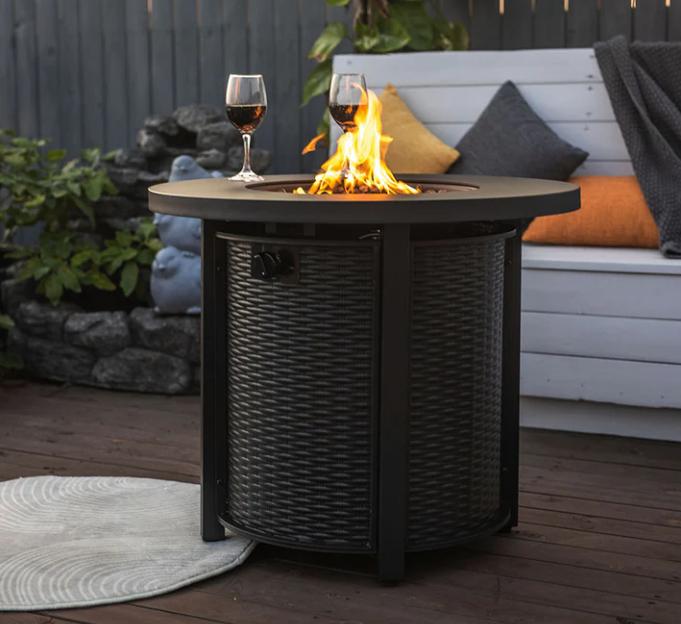Gas fire pits provide a cozy and convenient way to enjoy outdoor gatherings and create a warm ambiance. However, like any other appliance, they can sometimes encounter issues that require troubleshooting. In this article, we will guide you through common troubleshooting steps for gas fire pits, helping you identify and resolve potential problems. By following these steps, you'll be able to enjoy uninterrupted warmth and comfort in your outdoor space.
- Ignition Issues: One of the most common problems with gas fire pits is difficulty in ignition. If you're experiencing ignition issues, follow these steps:
- Check the Gas Supply: Ensure that the gas supply valve is fully open. If using a propane tank, make sure it is not empty and securely connected.
- Clean the Igniter: Remove any debris or dirt from the igniter or electrode, as this can hinder the ignition process. Use a soft brush or cloth to clean these components.
- Verify the Spark: Turn on the gas and observe if there is a visible spark when you try to ignite the fire pit. If there is no spark, the ignition system may need to be repaired or replaced.
- Low Flame or Flame Out: If your gas fire pit has a weak flame or the flame goes out shortly after ignition, try these troubleshooting steps:
- Check the Gas Pressure: Ensure that the gas pressure is adequate. If using a propane tank, make sure it is not running low. If using a natural gas supply, check if there are any issues with the gas line or regulator.
- Clean the Burner: Remove the Lava rocks or glass beads from the burner and inspect it for any clogs or blockages. Clean the burner ports using a soft brush or compressed air to remove any debris.
- Adjust the Air-to-Fuel Mixture: Some fire pits have adjustable air vents. Experiment with adjusting the air vents to achieve a better flame.
- Inspect the Thermocouple: The thermocouple is a safety device that detects the presence of a flame. If it becomes loose, it may cause the flame to go out. Carefully inspect the thermocouple connection and ensure it is securely fastened. Be cautious not to overtighten, as this can also cause issues. If the thermocouple is damaged or faulty, it may need to be replaced.
- Sooting or Blackened Logs: If you notice excessive sooting or blackening of the logs in your gas fire pit, consider the following troubleshooting steps:
- Check for Proper Ventilation: Ensure that the fire pit is located in an area with adequate ventilation. Poor ventilation can lead to incomplete combustion and increased sooting.
- Clean the Burner and Logs: Remove the logs and clean them using a soft brush or cloth. Clean the burner and ensure there are no blockages or debris that could hinder proper combustion.
- Gas Odor or Leaks: If you detect a gas odor or suspect a gas leak, it's crucial to take immediate action for safety:
- Turn Off the Gas: Shut off the gas supply immediately. If using a propane tank, close the valve on the tank. If using a natural gas supply, turn off the gas valve at the source.
- Check Connections: Inspect all gas connections for leaks. Apply a solution of soapy water to the connections and look for bubbles, indicating a gas leak. If a leak is detected, tighten the connection or replace any faulty parts.
- Seek Professional Assistance: If you're unable to resolve the gas odor or leak issue, contact a qualified professional for further inspection and repairs.
Conclusion:
By following these troubleshooting steps, you can effectively address common issues that may arise with your gas fire pit. Remember to prioritize safety and consult a professional if you're uncertain or unable to resolve a problem. With proper maintenance and care, your gas fire pit will continue to provide warmth and relaxation, allowing you to enjoy countless memorable moments in your outdoor space.
Any further question, you are welcome to consult our after sales team of AJ Enjoy.

















